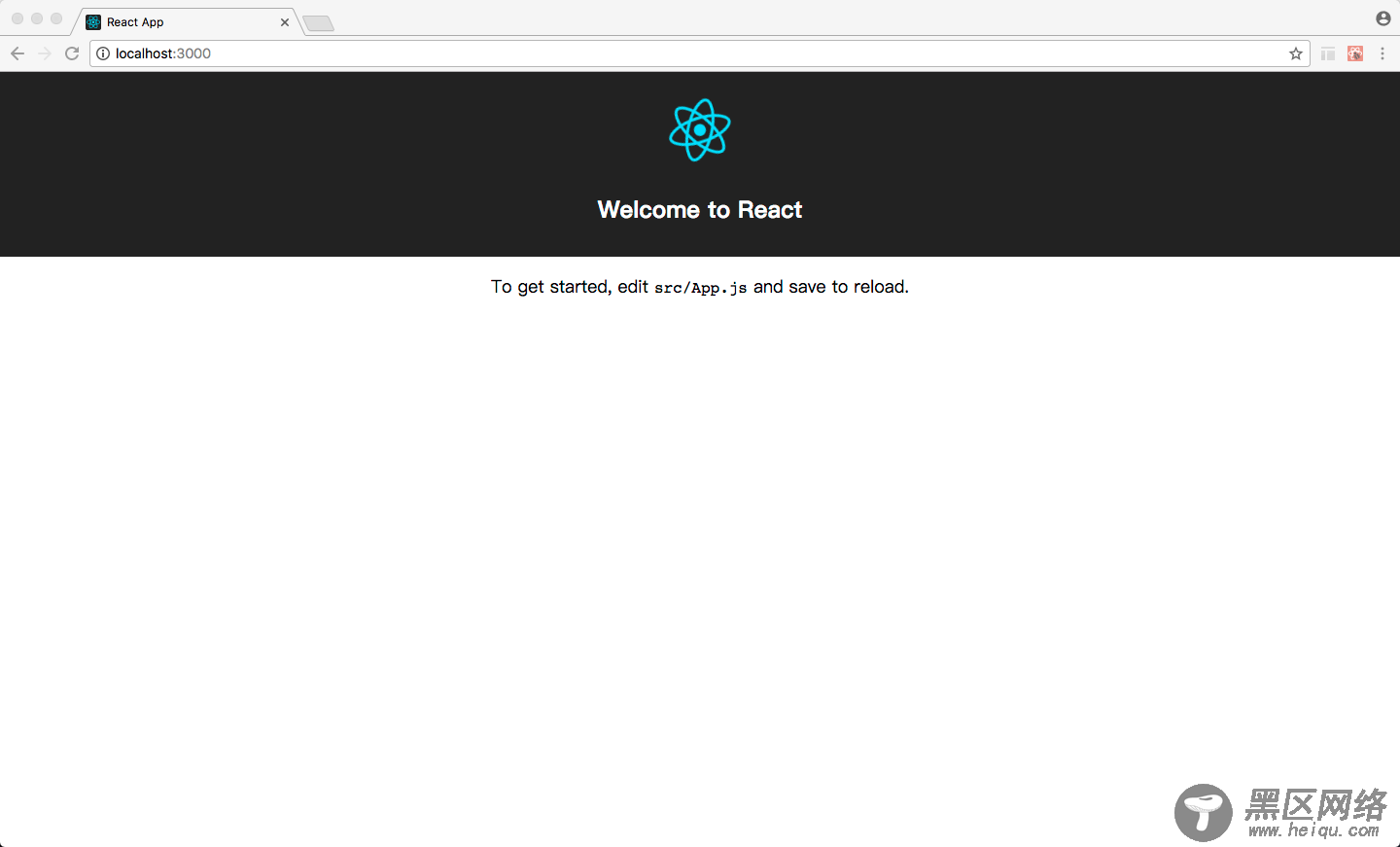写这个的初衷是很难找一个简洁的项目脚手架,很多脚手架都有很多依赖,光看依赖就要很久,所以自己参照网上的内容,弄个这么一个简单的多页面的脚手架。
利用creat-react-app 新建一个react应用
npm install -g create-react-app
然后创建一个项目
create-react-app demo
create-react-app会自动初始化一个脚手架并安装 React 项目的各种必要依赖,如果在过程中出现网络问题,请用cnpm淘宝镜像安装。
然后我们进入项目并启动。
cd demo
然后启动项目
npm start
那就会看到如下页面

然后进入src/App.js,用下面代码替换App.js中的代码(因为在webpack中暂时不想处理图片和icon)
import React, { Component } from 'react'; import './App.css'; class App extends Component { render() { return ( <div className="App"> <div className="App-header"> <h2>Welcome to App</h2> </div> <p className="App-intro"> To get started, edit <code>src/App.js</code> and save to reload. </p> </div> ); } } export default App
然后将 index.js 中的 内容替换为如下代码(删除registerServiceWorker)
import React from 'react'; import ReactDOM from 'react-dom'; import './index.css'; import App from './App'; ReactDOM.render(<App />, document.getElementById('root'));
然后删除src下面的registerServiceWorker.js(该文件用于构建pwa应用用的,暂时我们用不了)和 logo.svg文件(不想处理图片文件)和 App.test.js(用于测试用的)。
现在src/下面有四个文件。接下来,在src下面新建两个文件夹 app1和 app2,分别将原来的四个文件拷贝进入app1和app2。文件目录如下:

接下来,进入public文件下,删除favicon.ico(不想处理)和 manifest.json(构建pwa用的),然后将index.html中的内容用如下内容替换
<!doctype html> <html lang="en"> <head> <meta charset="utf-8"> <meta content="width=device-width, initial-scale=1, shrink-to-fit=no"> <meta content="#000000"> <title>React App</title> </head> <body> <noscript> You need to enable JavaScript to run this app. </noscript> <div></div> </body> </html>
这个index.html就是我们的模版html。
进入正题,开始install webpack和配置webpack
1.安装依赖。将package.json文件用下面的文件替代
{ "name": "demo", "version": "0.1.0", "private": true, "dependencies": { "react": "^15.6.1", "react-dom": "^15.6.1" }, "devDependencies": { "babel-core": "^6.26.0", "babel-loader": "^7.1.2", "babel-preset-es2015": "^6.24.1", "babel-preset-react": "^6.24.1", "clean-webpack-plugin": "^0.1.16", "css-loader": "^0.28.7", "extract-text-webpack-plugin": "^3.0.0", "file-loader": "^1.0.0", "glob": "^7.1.2", "html-webpack-plugin": "^2.30.1", "postcss-loader": "^2.0.6", "style-loader": "^0.18.2", "url-loader": "^0.5.9", "webpack": "^3.5.6", "webpack-dev-server": "^2.8.1" }, "scripts": { "start": "webpack-dev-server --open", "build": "webpack" } }
2.删除当前目录中的node_modules,然后重新在控制台执行
npm i
3.在根目录下也就是/demo下新建一个webpack.config.js文件,写入如下代码
const webpack = require('webpack'); const glob = require('glob'); const path = require('path'); const HtmlWebpackPlugin = require('html-webpack-plugin'); const ExtractTextPlugin = require('extract-text-webpack-plugin'); const CleanWebpackPlugin = require('clean-webpack-plugin'); const webpackConfig = { entry: {}, output:{ path:path.resolve(__dirname, './dist/'), filename:'[name].[chunkhash:6].js' }, //设置开发者工具的端口号,不设置则默认为8080端口 devServer: { inline: true, port: 8181 }, module:{ rules:[ { test:/\.js?$/, exclude:/node_modules/, loader:'babel-loader', query:{ presets:['es2015','react'] } }, { test: /\.(scss|sass|css)$/, loader: ExtractTextPlugin.extract({fallback: "style-loader", use: "css-loader"}) }, ] }, plugins: [ new ExtractTextPlugin("[name].[chunkhash:6].css"), new CleanWebpackPlugin( ['dist'], { root: __dirname, verbose: true, dry: false } ) ], }; // 获取指定路径下的入口文件 function getEntries(globPath) { const files = glob.sync(globPath), entries = {}; files.forEach(function(filepath) { const split = filepath.split('https://www.jb51.net/'); const name = split[split.length - 2]; entries[name] = './' + filepath; }); return entries; } const entries = getEntries('src/**/index.js'); Object.keys(entries).forEach(function(name) { webpackConfig.entry[name] = entries[name]; const plugin = new HtmlWebpackPlugin({ filename: name + '.html', template: './public/index.html', inject: true, chunks: [name] }); webpackConfig.plugins.push(plugin); }) module.exports = webpackConfig;
4.然后用直接执行如下代码
npm run build
成功在dist中看到你的两个页面app1和app2.
如果要自己调试用直接启用npm run start,然后在localhost:8181/app1.html查看页面进行调试。
